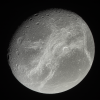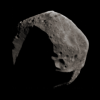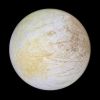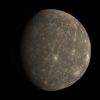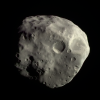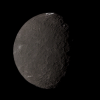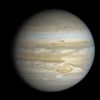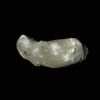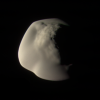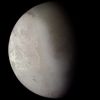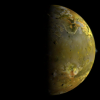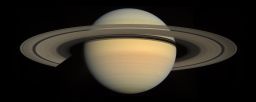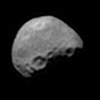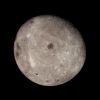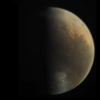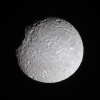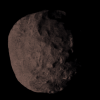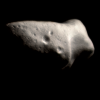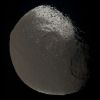Emily Lakdawalla • Dec 20, 2009
Planetary Society Advent Calendar for December 20: Iapetus
Iapetus! I'm always interested in Cassini images, but five years ago this month I was refreshing the Cassini raw images website several times a day, eagerly anticipating the mission's first good encounter with Iapetus. At the time Cassini was on the outbound leg of its second orbit of Saturn, known as "Rev B" for reasons too complicated to explain just at this moment. In a few days, it would release the Huygens probe, which would slowly drift ahead of Cassini to descend into Titan's clouds two weeks afterward. But, if everything proceeded as planned with all of this mechanical stuff and the spacecraft judged all was well, we'd get a special New Year's gift of images of this special moon.
We've known Iapetus was different since it was first observed by Cassini, the original Cassini that is. He discovered Iapetus but never saw it when it should have been visible on the opposite side of Saturn. He correctly deduced the reason: Iapetus is bright (hence, visible) on its trailing hemisphere, and dark (hence, invisible to Cassini) on its leading hemisphere. Both Voyager spacecraft looked at Iapetus, but the moon is so distant from Saturn that neither one got very good images; and the dark terrain on Iapetus' leading hemisphere (now called Cassini Regio) proved a difficult challenge for Voyager's cameras.
So Iapetus was one of the most mysterious spots in the Saturn system before the Cassini spacecraft got there. I didn't really know what to expect before the pictures came back from the New Year's Eve encounter. I sure didn't expect the images that arrived! Cassini saw so much detail within Cassini regio. There were several enormous impact basins, which was cool. But in addition to that, there was an almost perfectly straight ridge running exactly along the equator. I'd never seen anything like that anywhere before.

Because of Iapetus' very distant and tilted orbit, it's very hard for Cassini to return to it. There was only one better encounter, on September 10, 2007. No further close approaches are planned for the rest of the extended or extended-extended missions. It's not that the science team doesn't want to return; it's just that it's so expensive in terms of fuel that another Iapetus encounter would cost too much in the way of science performed in the rest of the Saturn system. I can't really imagine a future mission that returned to the Saturn system to explore Enceladus or Titan would get any better chances at Iapetus. I think that better exploration of Iapetus will have to wait until we have some new, presently unenvisioned (except in science fiction) spaceship propulsion technology that allows us to fly around a giant planet's neighborhood at will.
Each day in December I'm posting a new global shot of a solar system body, processed by an amateur. Go to the blog homepage to open the most recent door in the planetary advent calendar!
Support our core enterprises
Your support powers our mission to explore worlds, find life, and defend Earth. You make all the difference when you make a gift. Give today!
Donate

 Explore Worlds
Explore Worlds Find Life
Find Life Defend Earth
Defend Earth


